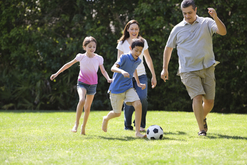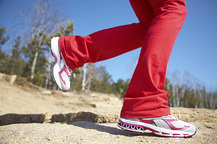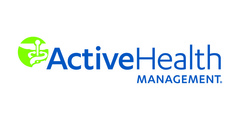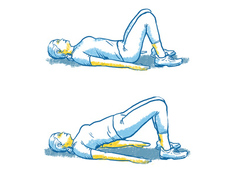April 2017 | #56
April is Alcohol Awareness Month
 |
|
The facts about alcoholism in our country
are striking: more than 18 million Americans suffer from alcohol-use
disorders and 25% of American children have been exposed to such disorders in
their families. Alcoholism also impacts our communities; the economic cost of
alcohol abuse is estimated to be $223.5 billion ($746 per person). Participate in Alcoholism Awareness Month by:
|
Choosing to drink alcohol should include taking a
responsible approach. The key is to keep your drinking at low to moderate
levels.
One drink = 1 12 oz can of beer OR 1 5 oz glass of wine OR 1
mixed drink with 1.5 oz liquor
How much is drinking in moderation?
 How do I know if my relationship with alcohol is not
healthy?
-
Your relationships with others take second place
to alcohol.
- You find it hard to be productive at work,
school or home due to your need to drink.
-
Drinking too much and thinking it’s okay to
drive.
-
Having withdrawal or uncomfortable side effects
when you stop drinking.
- Mixing some medications with drinking—talk with
your provider or pharmacist.
I think I have a problem with alcohol. How do I find help?
-
List your reasons for wanting to quit or cut
down on alcohol.
- Make a specific plan to stop drinking and share
it with a friend or family member.
- Track your success and journal what benefits you
see from no longer using alcohol.
-
Use your experiences to get you through relapses.
- Practice new behaviors and find healthier ways
to spend your time.
- Find self-help groups for support from others
who have similar issues.
-
Be positive and reward yourself with the money
you save from not drinking.
Source:
Healthwise
Back to top
 |
|
The
AlaskaCare Employee Assistance Program, administered by Aetna, provides
responsive, caring and effective services to help balance your personal and
professional life. Check out resources available to help with stress management
and alcohol and drug issues, as well as emotional wellness, marital/relationship
issues, financial and legal concerns, and more.
Visit
the AlaskaCare EAP web page for more information.
Back to top
|

When the whole family is involved in physical activities
together, children learn that being active is fun and makes you feel good. And
busy parents can combine family time with exercise time.
Try these tips for getting everyone in the family up and
moving together:
Getting started
- As a
family, make a list of activities you'd like to do together.
- Make sure
the activities are things everyone can do and enjoy.
- Keep a family
physical activity log, or hang a calendar on the wall.
- Try to
plan one or two family activities a week. For ideas, see the
suggestions below.
- Once a
month, plan something special that involves being active, like a
trip to the zoo, a day hike, or camping.
-
Use a
safe backpack, stroller, or bike trailer so that smaller children can
be included in family activities.
Walking
When family schedules get really busy, going for a walk may be the easiest
thing you can do together.
-
Start
with short walks that everyone in the family can do. Add more distance
gradually. Younger children can ride a bike or a tricycle. You can pull a
wagon in case little ones get tired.
-
Scavenger
hunts can keep children from being bored on a walk. Keep in mind a
list of "treasures" they can find, such as a red leaf, a blue
house, a black dog, or an out-of-state license plate.
-
Use a
phone app or get pedometers, and work on increasing the number of
steps you take on your family walks. Start with a goal of 10,000 steps a
day.
- Register
the whole family in a family fun run/walk in your community. If the
event is for charity, have your family walk through your neighborhood to
collect pledges.
Consult with your
health care provider before starting a new exercise program.
Source: Healthwise
Back to top
|

Regular exercise is one of the best ways to manage stress. It
can help in many ways, including promoting a feeling of well-being.
Experts recommend 2-1/2 hours of aerobic activity every week.
You might want to talk to your doctor before starting a physical activity
program.
Upcoming
Community Physical Activity Events and Resources:
Back to top
|
 |
|
When your work life and personal life are out of balance,
your stress level is likely to soar. Use these practical
strategies to restore harmony.
Source: Mayo Clinic
Back to top
|
Looking for wellness events in
your area? Check our Wellness Events and Community Activity Calendar regularly for new
opportunities to get involved and improve your health! You can find onsite health coaching, webinars, and more.
If you know of an
event or activity in your area, please email us at doa.drb.wellness@alaska.gov.
Webinar
Stress Less, Live More
Begins Tuesday, April 4, 2017
Learn
how to manage your stress and start living the healthier life you
deserve. The six-week program will help you learn to manage your stress
over time to avoid negative effects on your health. Register today!
Back to top
 Maybe you’ve had your eye on some new running shoes—they could be yours if you win! Log in to MyActiveHealth.com/AlaskaCare and complete a Digital Coaching module (reported in Heart Beats). Each time you complete Heart Beats of Digital Coaching, you get another chance to win. Choose from almost 200 category topics and start working towards your personal health goals today with Digital Coaching—available 24 hours per day!
Back to top
|
 |
|
The Bridges exercise improves performance, posture, and reduces knee and
back pain. Strengthening your core helps maintain proper posture when
sitting or standing for long periods of time.
Try it out...
Back to top
|
 |
|
Liven up the breakfast routine with this Southwestern quinoa
bowl. Quinoa contains a hefty amount of protein, making this a great morning
option. Add other items to turn this into your own creation— cucumber, radishes,
black beans, and more. The eggs can also be cooked however you
prefer—over-easy, poached, or even scrambled.
Get the recipe...
Source: American Heart Association
Back to top
|
|